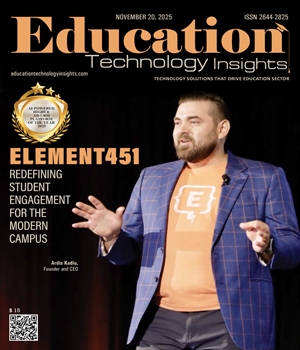THANK YOU FOR SUBSCRIBING
Be first to read the latest tech news, Industry Leader's Insights, and CIO interviews of medium and large enterprises exclusively from Education Technology Insights
Transforming Higher Education: Online Education Lessons Learned from the Pandemic
Rebecca Parton, Dean, Academic Innovation & eLearning at Lincoln Land Community College
 Rebecca Parton, Dean, Academic Innovation & eLearning at Lincoln Land Community College
Rebecca Parton, Dean, Academic Innovation & eLearning at Lincoln Land Community CollegeAs we pass the third anniversary of the COVID lockdown, many in higher education are reflecting on the long-term impact of the pandemic on online education. For those in the business of administering and supporting online education, the emergency lockdown was a call to arms. Teams of online education specialists, instructional designers, IT staff, and online faculty across the country aided their colleagues as they navigated the emergency transition from traditional delivery to online.
This massive move to online delivery required significant dedication from the support teams who manage the technical and pedagogical changes in such a short period of time. And as we know, the shift online, which began as a two-week inconvenience, became a multi-year disruption to education worldwide. Looking to the future, it’s important to acknowledge the challenges and opportunities the emergency shift created for online education.
To make the transition, many courses maintained a synchronous delivery method, using live streaming services. Often these courses were identified as “online courses” and quickly became the focus of quality concerns. It’s now understood that these emergency synchronous courses are not the same as asynchronous online courses. The shift to online also forced students and faculty online who were not suited for the learning environment, creating frustration and anxiety for some.
While mental fatigue was the initial reaction for many, the move online provided students the opportunity to experience the advantages of online education. This experience has had a significant impact on enrollments as many institutions continue to increase online offerings to meet demand.
As demand continues to grow, providing quality online programming will be essential for any institution hoping to sustain the momentum gained during the pandemic. The competition in online education has never been greater. Colleges and universities previously not offering online courses now have the programming, support services, and technologies to do so. Ensuring course quality and student success is critical.
“The pandemic showed us just how wide the digital divide is, and while online enrollments continue to hold steady, institutions need to understand who their online students are and how life circumstances can impact their learning.”
Quality online education programs depend on three essential factors: course design standards, faculty professional development, and student support. Establishing online course design standards support online student success and aid in meeting the accreditation requirements for the delivery of distance education courses. Online faculty development often concentrates on technology, but it’s vital to provide faculty development that also focuses on instructor presence, the sense of “being there” in an online course. A common concern during the pandemic was the loss of a sense of connection between instructors and students. A strong online instructor presence nurtures that connection and encourages active student engagement in an online course. Institutions that promote instructor presence as a primary element of quality online instruction will also prepare their faculty for the criteria necessary to achieve regular and substantive interaction (RSI).
The pandemic showed us just how wide the digital divide is, and while online enrollments continue to hold steady, institutions need to understand who their online students are and how life circumstances can impact their learning. To support a diverse student population, online course design standards should incorporate accessibility guidelines and mobile-friendly tools to provide inclusive online courses to reach all students.
The pandemic taught educators that they are resilient and creative. It advanced the evolution of online education and changed higher education forever. While moving forward into the “new normal” looks different for each institution, online education will continue to play a leading role in the future of higher education.
Read Also
Designing Learning that Transforms and Fosters Change
Stop Chasing Interesting. Start Choosing Impact.
Leading with Purpose to Strengthen Campus Belonging
Achieving Educational Excellence through Meaningful Engagements
Beyond Administration: How a School Management System Transforms Learning Communities
Empowering Educators through Purposeful, Connected and Transformative Learning

I agree We use cookies on this website to enhance your user experience. By clicking any link on this page you are giving your consent for us to set cookies. More info




















